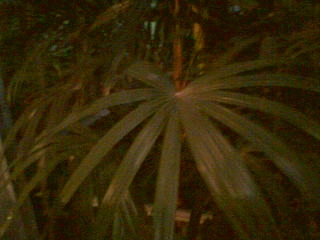Lost
Foliage, Flowers
When plants change environments, they may lose foliage or flowers if
not properly acclimated. When moved from one location to another,
plants want the same type of environmental conditions. These
conditions should only be changed gradually to prevent or reduce
shock. If you buy a plant from a location with bright sunlight,
high temperatures, and high humidity, but the environment where you
plan to place the plant is different, be sure to allow the plant to
adjust to its new location by changing these attributes gradually.
Wilting
Wilting is a tough problem to remedy, because it can be caused by too
much or to little water. Too little water causes a plant to wilt
due to water deficiency. Too much water can cause the plant to
wilt due to too little oxygen, as the excess water does not leave room
for oxygen in the interstitial spaces
in the soil. Water can also cause root rot.
It is easier to cure an under-watered plant than an over-watered
plant. If your plant shows signs of wilting, check the amount of
water the plant should have. Be sure you are watering the plant
properly, and on a regular basis.
Yellowing
Yellowing is a sign of chlorosis,
or a lack of minerals and nutrients needed for chlorophyll.
However, knowing which nutrient is defficient is hard to
determine. Lack of nitrogen, magnesium, and iron can cause
chlorosis.
Brown
Tips
There are three causes of brown tips in
plants.
- Potassium is one of the three big macro-nutrients
that plants require, and is a component of proteins. It is the
third number often listed with fertilizer. Brown tips of plants
often indicate a lack of potassium. Calcium forms the middle
lamella layer that holds cells together.
- Calcium cannot move through a plant, so calcium
defficiency will often lead to brown tips where the plant is growing.
- Many plants do not survive well in windy, drafty
areas. Often, the tips of plants in these areas will brown.
The Rhapis exelsa is an exception - if you want to put a plant in a
drafty, windy area, consider this.
 Stunted Growth
Stunted Growth
Two of the three macro nutrients - Phosphorous and Potassium - can
cause stunted growth. These are the last two of the three numbers
you often see listed on fertilizer. Phosporous is part of the DNA
of plants, and Potassium makes up plant proteins. If you suspect
that your plants are suffering from stunted growth, consider
fertilizing them.
Brown
Edges
Plants lacking Potassium will often show brown edges. To remedy
this, consider using a fertilizer high in potassium.
Necrotic, Light Green
A plant with a necrotic, light green look may be lacking sulfur.
Sulfur is a macro nutrient that is a large component of proteins.
|
|
DoctorHorticulture.com
and DrHort.com, your source for
horticultural
information.
|
|
|

